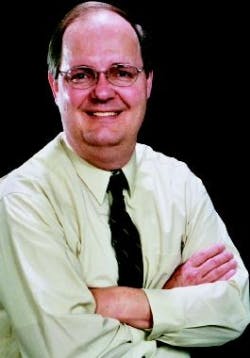Alan L. Hitchcox
editor
When Top Thrill Dragster opened at Cedar Point, Sandusky, Ohio, in 2003, I was immediately impressed that the attraction accelerates riders to 120 mph in about four seconds, then launches them straight up a 420-ft hill. But when I visited Cedar Point for this month's cover story, I became equally impressed with the hydraulic system that makes this all possible.
Shortly after arriving at Cedar Point, public relations representative Tony Clark introduced me to Monty Jasper, vice president, maintenance. Jasper explained that the hydraulic system delivers up to 10,000 hp to launch Top Thrill Dragster coasters up and over a hill that tops out at 420 ft. Granted, the 10,000 hp is only needed for about six seconds, but as is so often the case, the ability to store energy and release it on demand makes hydraulics the best solution for this type of application.
Top Thrill Dragster uses twin hydraulic systems to drive a giant sheave, which pulls a cable that, in turn, accelerates a coaster train. Each hydraulic system consists of 16 motors driving the sheave through a series of gears. Each motor is powered by its own pump, and the pumps continue to run even when the motors don't. That's because most of the pump flow goes toward charging accumulators.
Jasper said the pumps can charge the accumulators in less than a minute, so a typical ride cycle uses the pumps to charge the accumulators for about 50 seconds, then uses the combined flow of the pumps and accumulators to drive the hydraulic motors for about four seconds. The accumulators store hydraulic energy and release it within seconds, allowing the hydraulic system to momentarily deliver power several times that of its continuous power rating.
Jasper said this hydraulic solution was the only practical choice. He explained that linear induction motors were considered for this application because they would have been more energy efficient. But they were quickly ruled out because they would have been prohibitively expensive — if not impossible — with today's technology. Linear induction motors would have required a much longer distance to accelerate coasters to 120 mph. This would have consumed too much land area and would have deprived riders of the thrill of accelerating from zero to 120 mph in six seconds.
Prior to my visit to Cedar Point, I don't think I had ever gone 120 mph in anything except an airplane. But after my interviews, associate editor Mary Gannon and I were fortunate enough — or crazy enough — to ride Top Thrill Dragster. And I must admit, once I got strapped into that seat and was jettisoned toward the imposing 420-ft hill in front of me, hydraulics never even crossed my mind.


